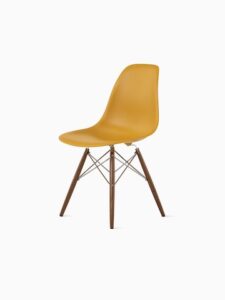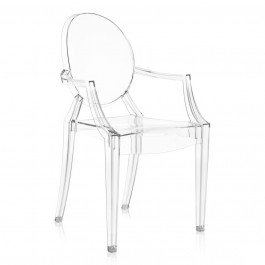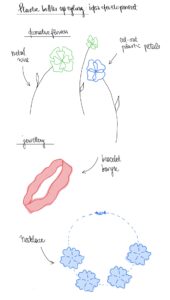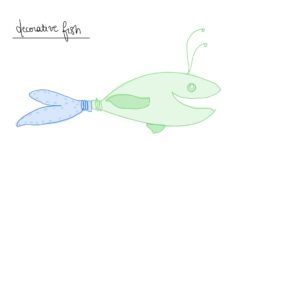Hello and welcome back to my blog!
In this post, I will be talking about PLASTIC and my thoughts on its impact and future in the design world as a combination of meaning and materiality.
Plastic is a material that has revolutionised society and remains one of the most dividing materials in the design world. It’s versatile, affordable and functional and has completely changed everything from mass production to aesthetic creativity. Just looking around me as I am writing this blog, I can see so much plastic; headphones, keyboard, window blinds, juice bottle, ruler… It has completely changed our relationship to mass production, consumption and durability. Furthermore, plastic has had a particularly big impact in design by enabling unprecedented creativity (through material versatility), affordability, and functionality. Iconic designs like the Eames Moulded Plastic Chair (Fig. 1) and Philippe Starck’s Louis Ghost Chair (Fig. 2) demonstrate how plastic has defined modern design aesthetics.
Figure 1: Eames Moulded Plastic Chair Figure 2: Louis Ghost Chair by Philippe Starck


While plastic has brought convenience and innovation, its environmental persistence, health risks, and contribution to unsustainable practices highlight significant challenges. But the question is, how are we going to deal with it?
During the debate we had on Thursday, a very interesting point was raised which is that we can’t make the huge quantities of plastic in the world magically disappear… And even though we urgently need to stop producing plastic at the rate that we do, ‘cancelling’ it because of the negative impacts associated with it will not get us anywhere either. We should learn to ‘fall in love with it again’ and innovate to up-cycle (not just re-cycle) all of the plastic that is already here. Just like the rise of plastic brought a new wave of innovation, we must now see the environmental impacts of plastics as an incentive towards new innovation and sustainable practices. Eco-conscious materials like recycled plastics and bioplastics must be integrated into designs to mitigate waste and pollution. I actually think that the urgent climate challenges we face, which can be illustrated with plastic, bring a really exciting opportunity for designers to think outside the box and I definitely want to be apart of that movement through my designs.
On a small scale, we did that exercise earlier during the day at the workshop where we up-cycled old plastic bottles into new designs. Here are the design ideas I had (Fig. 3).
Figure 3: Plastic bottle Up-Cycling design ideas


Bibliography:
Figure 1: Herman Miller (n.d.). Eames Molded Plastic Chair. Herman Miller.
Figure 2: Kartell (n.d.). Louis Ghost Chair by Phillippe Starck. Kartell. Available at: https://www.kartell.com/gb/en/ktgb/shop/product/louis-ghost/66-530.
Figure 3: Noel, E. (2024). Plastic Bottle Up-Cycling Design Ideas. own work.





Leave a Reply